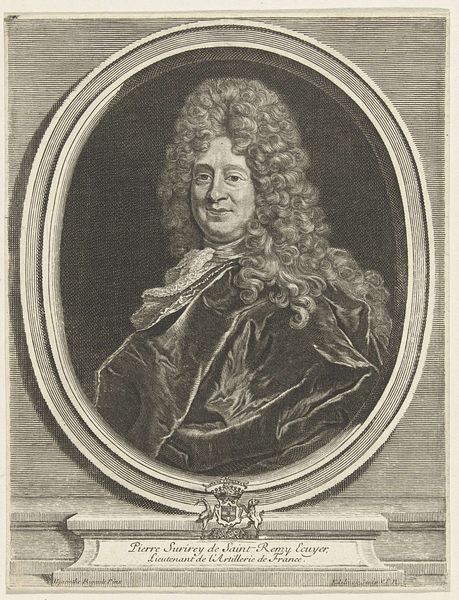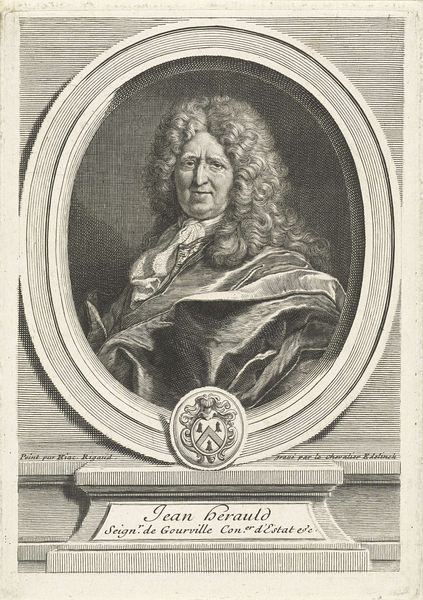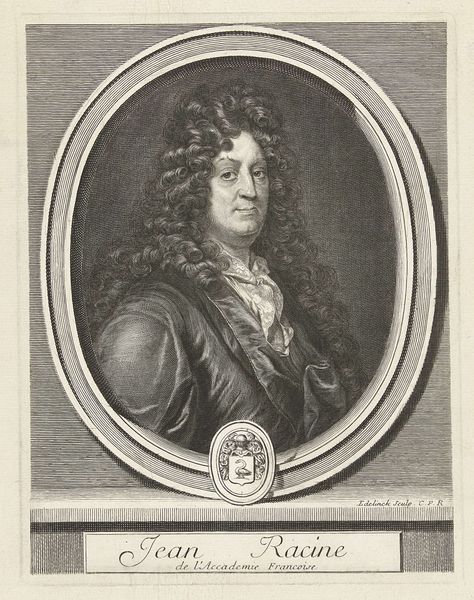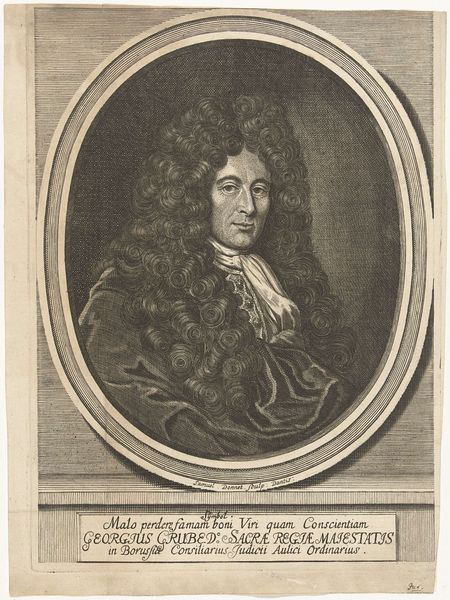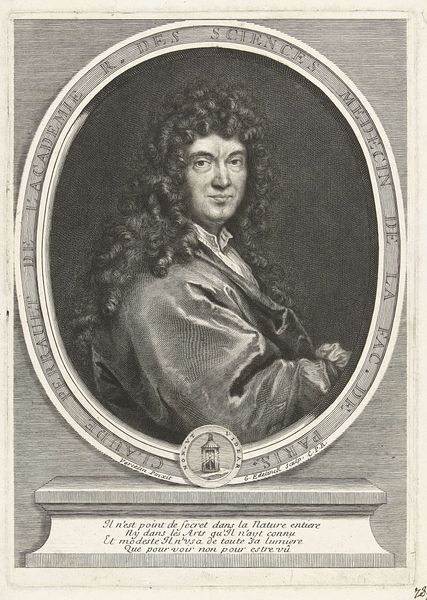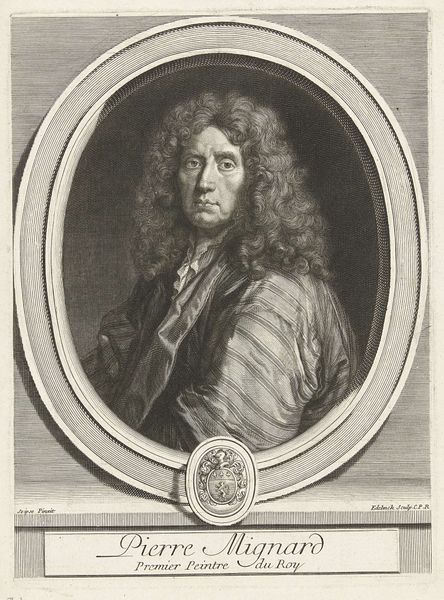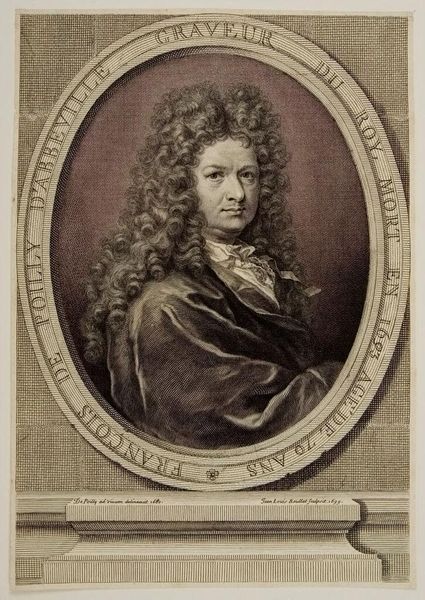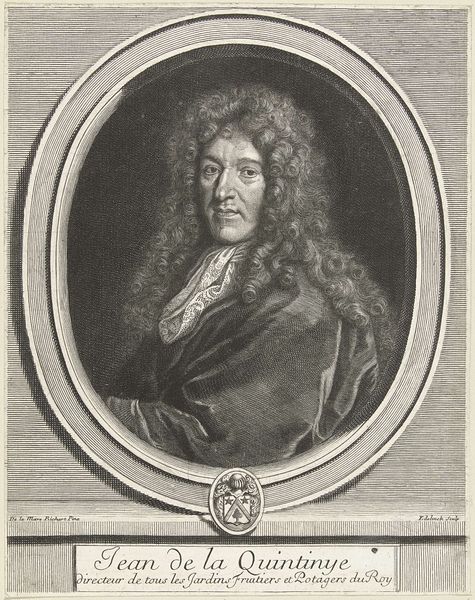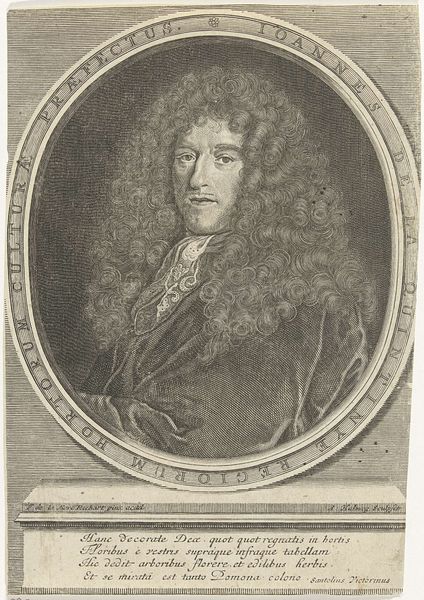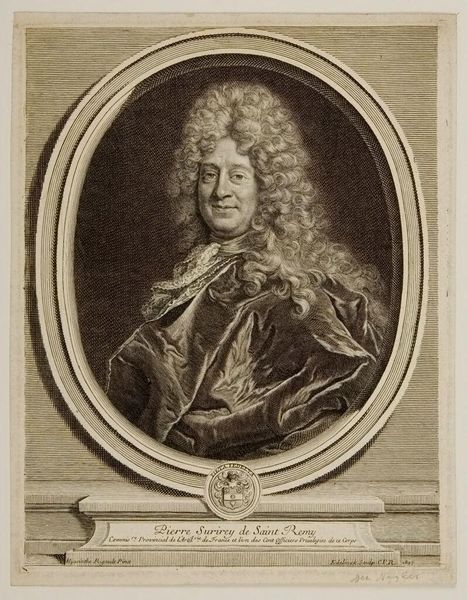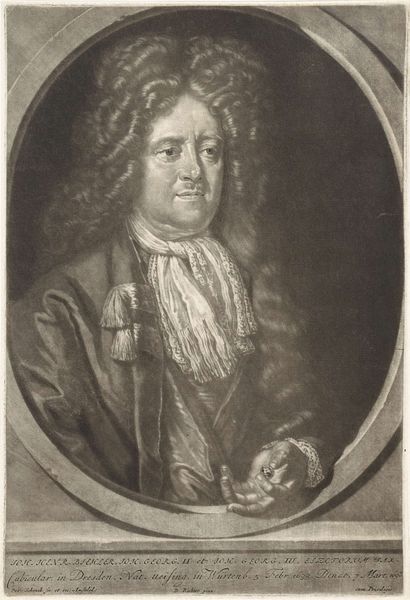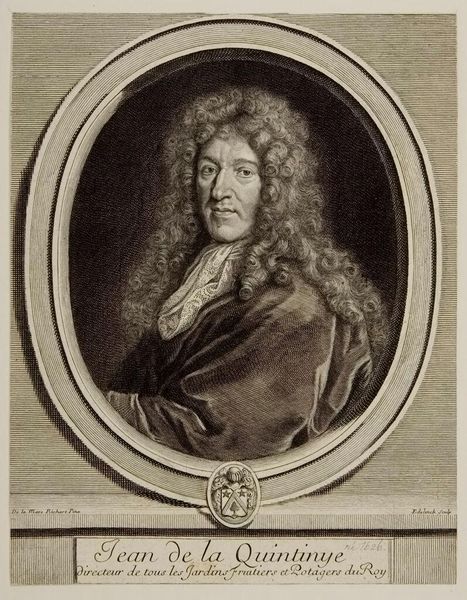
drawing, print, engraving
#
portrait
#
drawing
#
aged paper
#
baroque
# print
#
old engraving style
#
line
#
engraving
Dimensions: height 142 mm, width 95 mm
Copyright: Rijks Museum: Open Domain
Curator: This is Gérard Edelinck's "Portrait of Nicolas Verien," an engraving created in 1685, now residing here at the Rijksmuseum. What are your immediate thoughts on encountering this work? Editor: Wow, what a wig! I'm instantly transported to the court of Louis XIV, a world of powdered faces and elaborate formality. But there's something almost… mournful about his expression, wouldn't you say? Curator: It's intriguing, isn't it? The portrait emerges within the context of Baroque ideals of representation, a visual language designed to communicate status and intellect. The sheer volume of the wig indeed speaks of wealth and the constructed image of power in the period. Editor: Absolutely. The swirling curls almost overwhelm his face. You can sense the weight, both literally and figuratively, of that societal expectation. Still, he manages a glimmer of something… is it melancholy? Or is he just bored of sitting? Curator: Perhaps both. Edelinck’s technical skill is remarkable. Consider how he uses line to define not only Verien's features, but also the texture of his clothing and the intricacies of the lace. And Verien himself, being an engraver, surely had a professional appreciation of Edelinck’s craftsmanship. We might think about their professional and political networks at that time. Editor: Networks, always! It's like Facebook for the 17th century. This is very beautifully printed for sure and those tiny engraved lines just build form out of nothing... I think that’s also where the somber effect lives: everything feels meticulously, even painfully, rendered, line by line. Curator: I agree. The medium contributes greatly to the sense of controlled, deliberate presentation. Considering the political climate of the time and Louis XIV's absolute reign, these seemingly small artistic choices echo wider societal power dynamics. It’s also useful to see the print as a commodity circulating through the channels of patronage. Editor: Ah, yes. The subtle reminder that art never exists in a vacuum. Even a portrait with such an overwhelming amount of fabulous curls carries the weight of political and cultural baggage. It’s been fun unraveling some of those lines and meanings. Curator: Indeed. I think through considering context and also emotional impact, we find new ways into these portraits. The dialogues between personal expression and broader social forces in this engraving invite questions that are as relevant now as they were then.
Comments
No comments
Be the first to comment and join the conversation on the ultimate creative platform.
